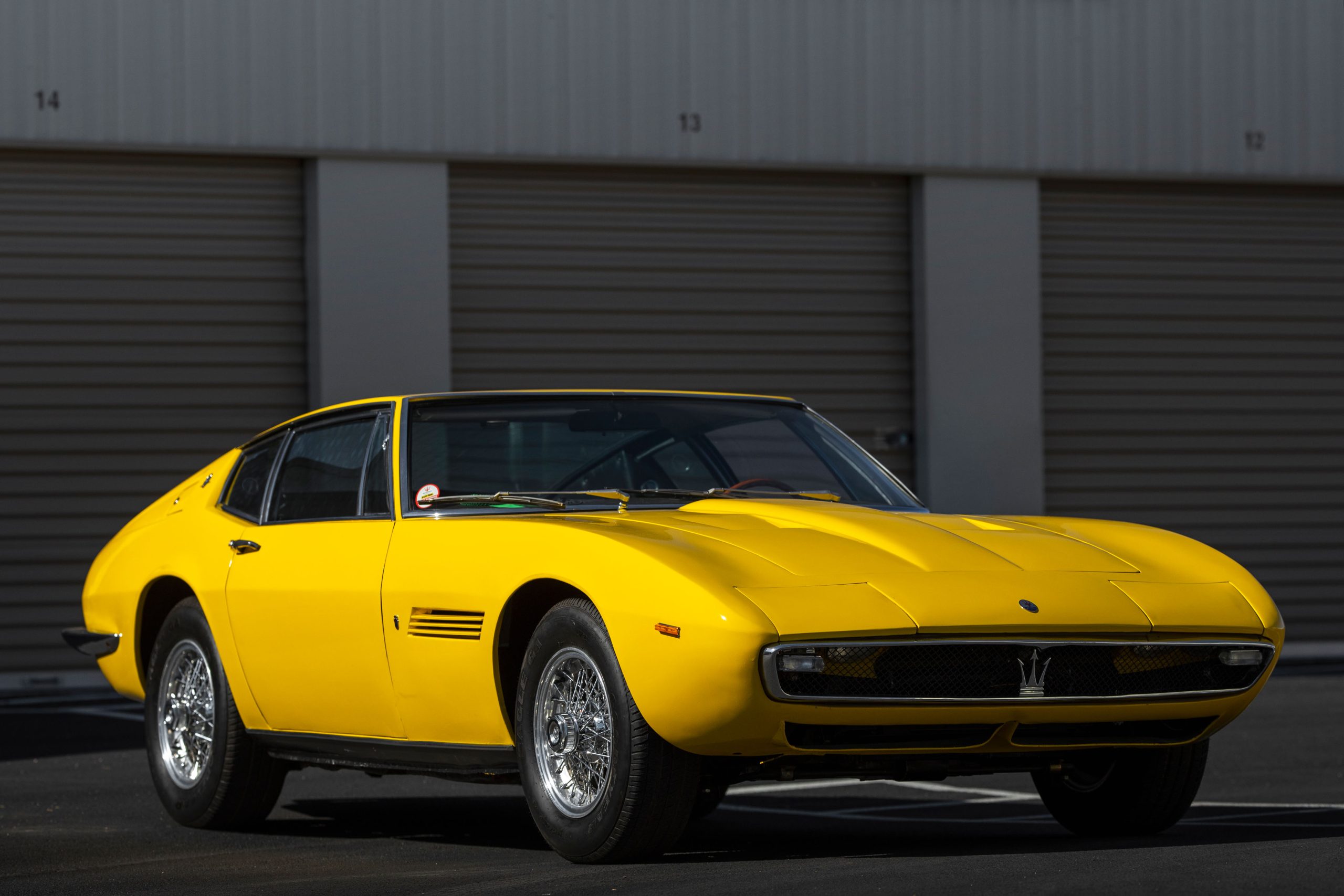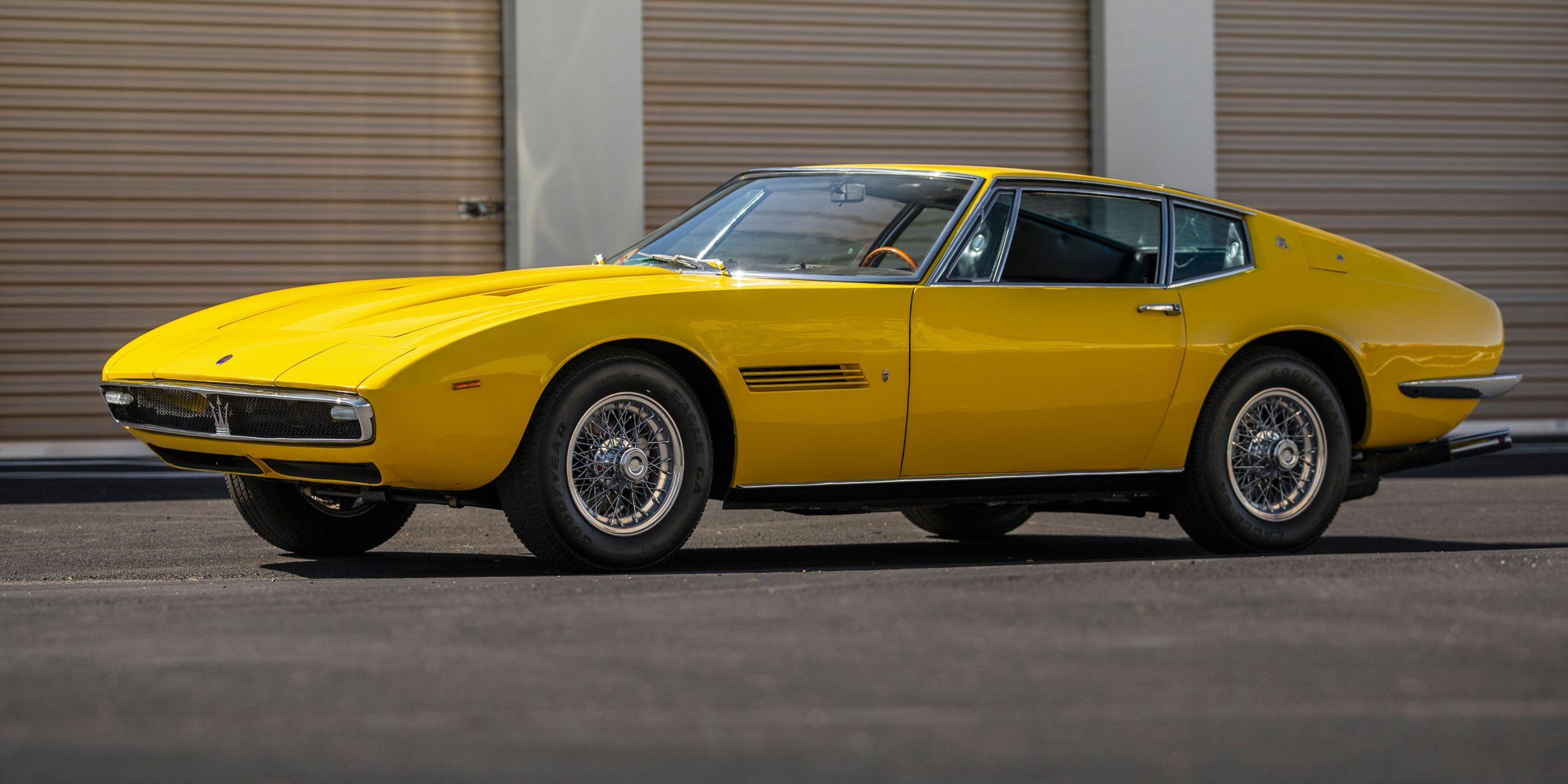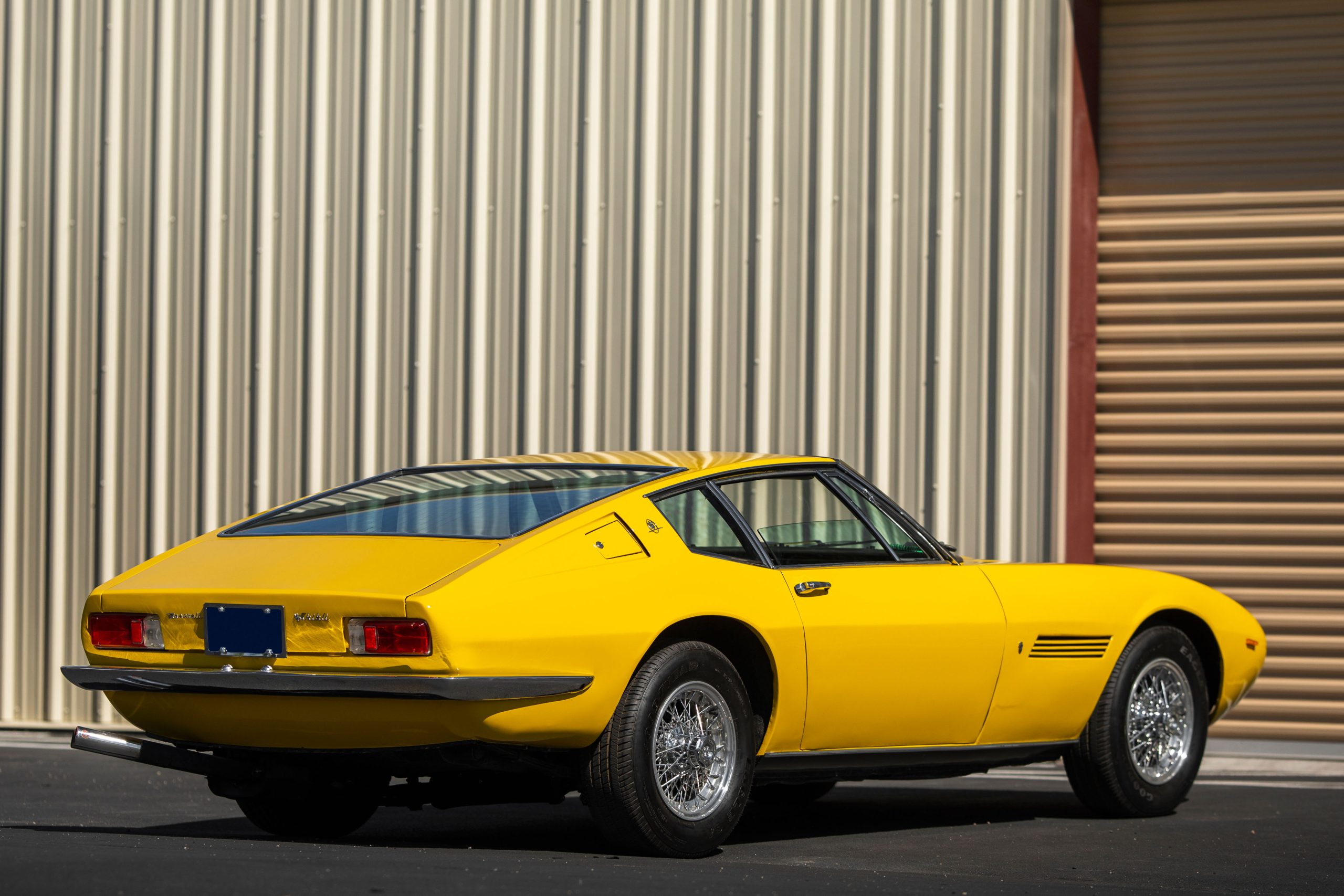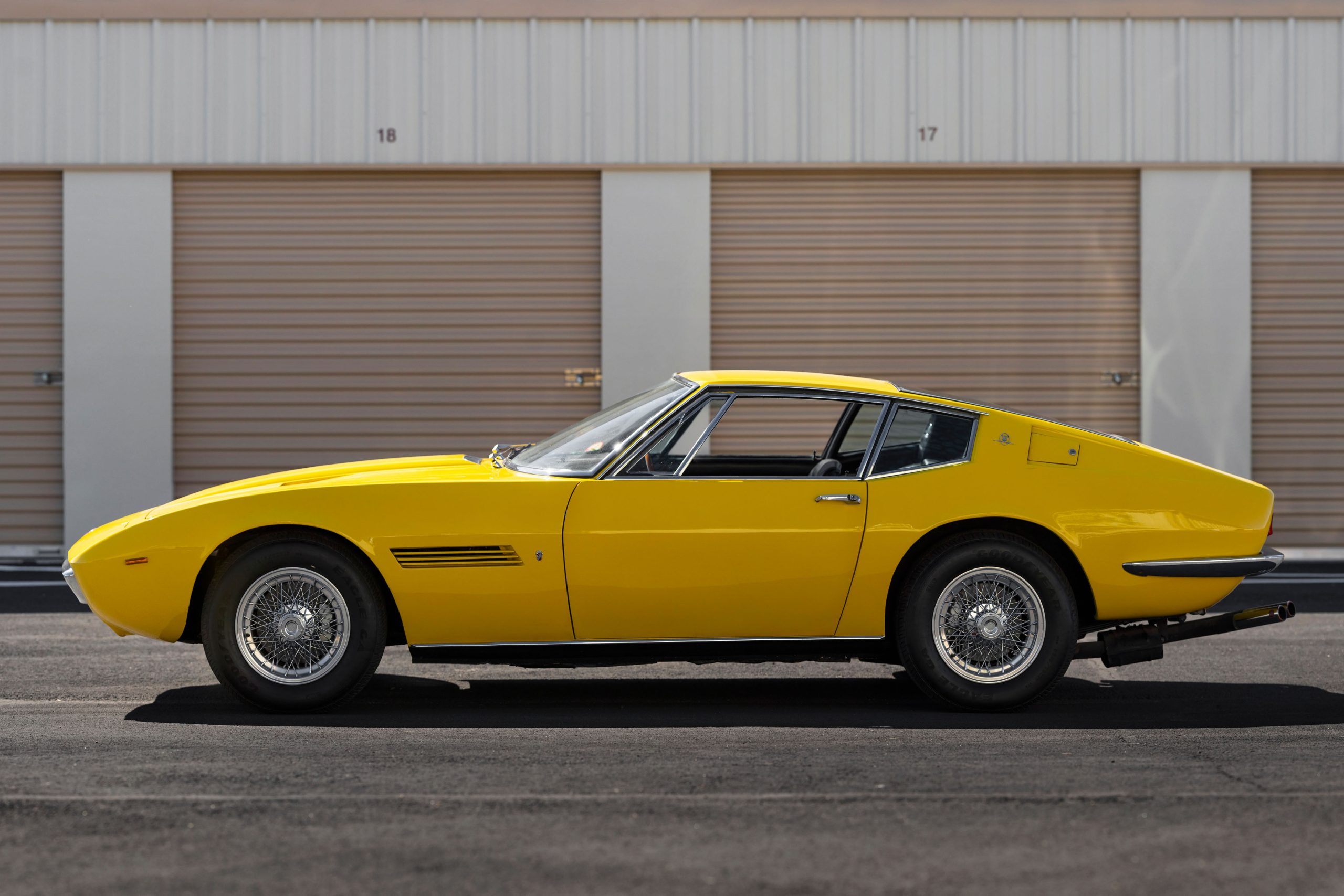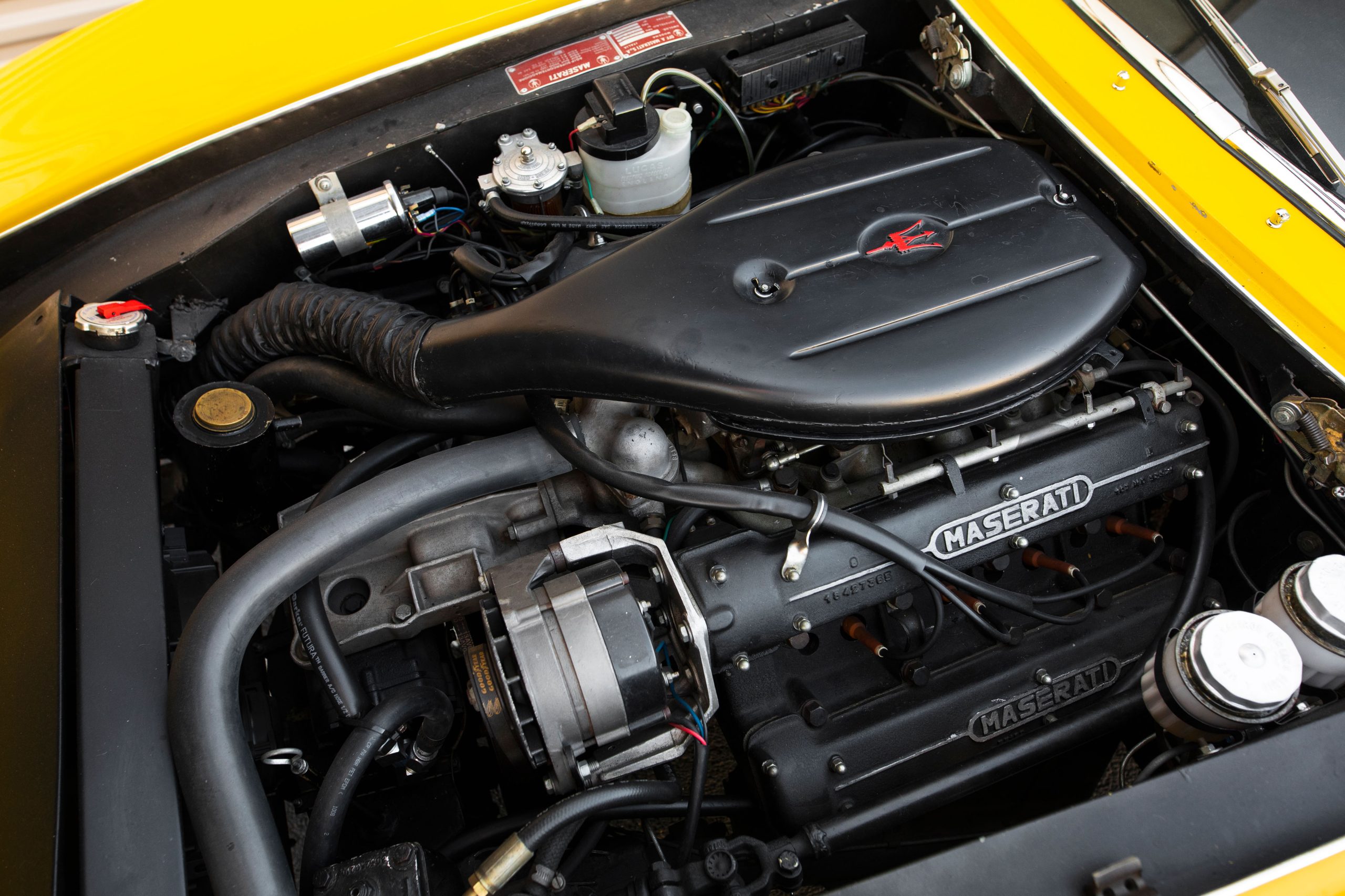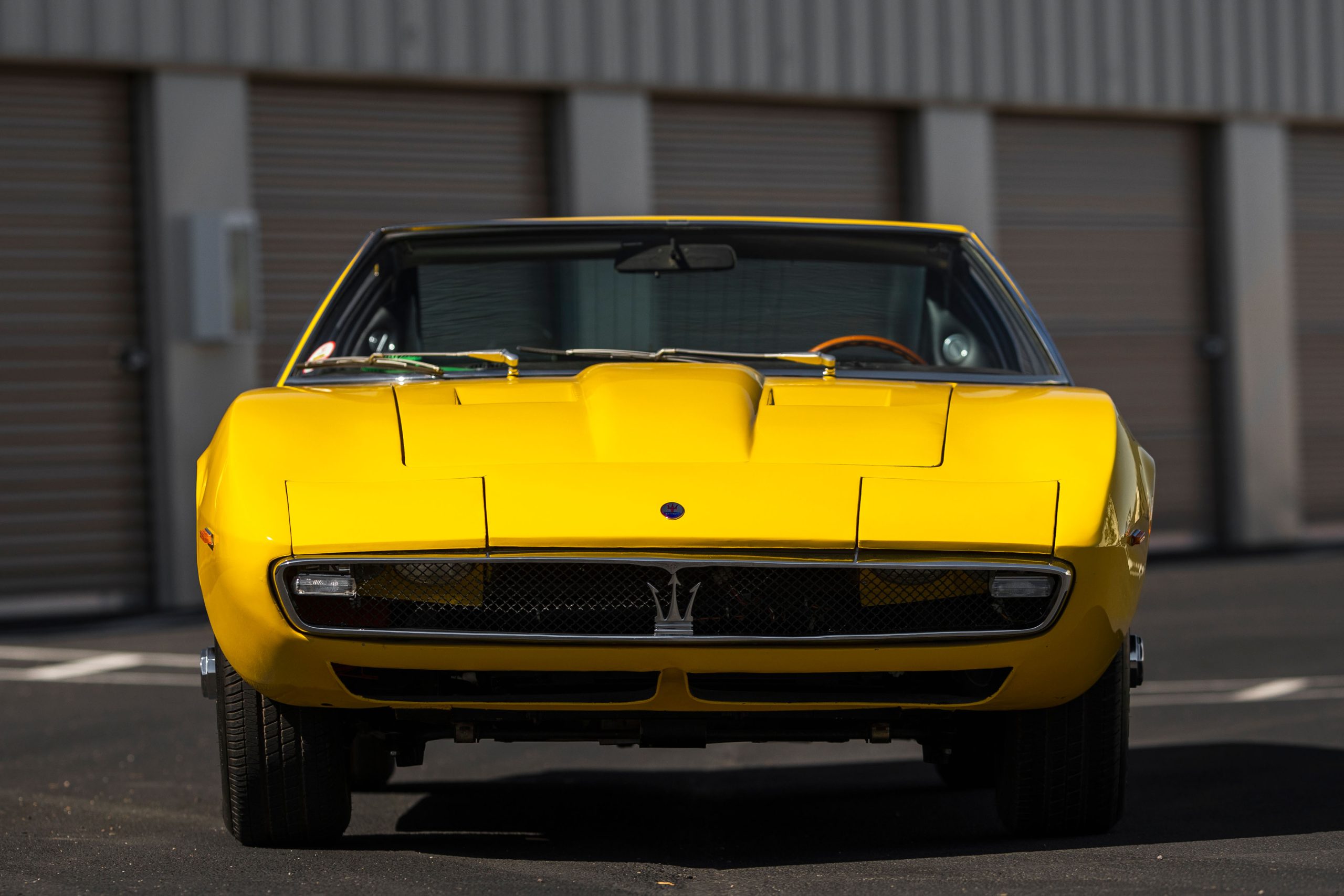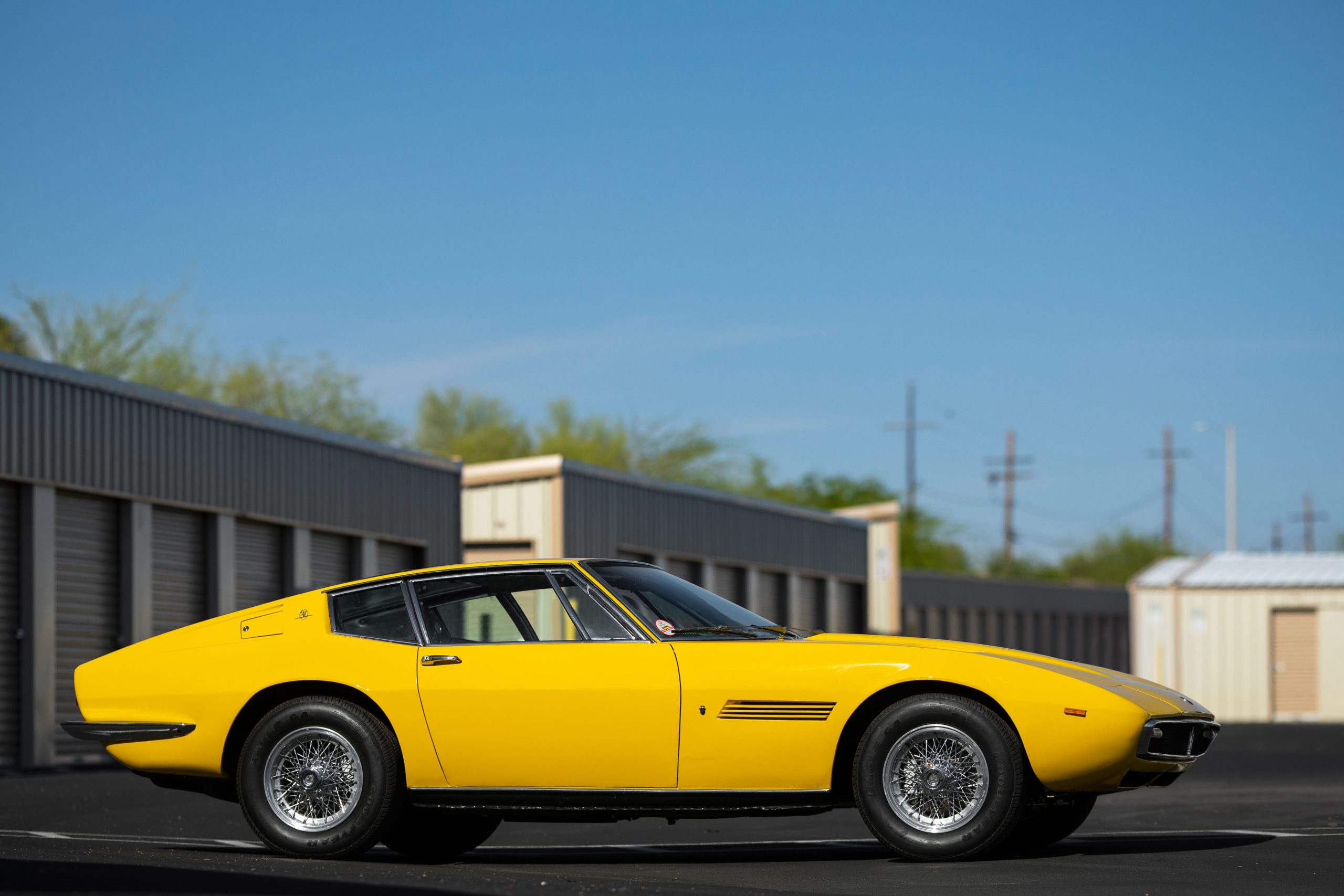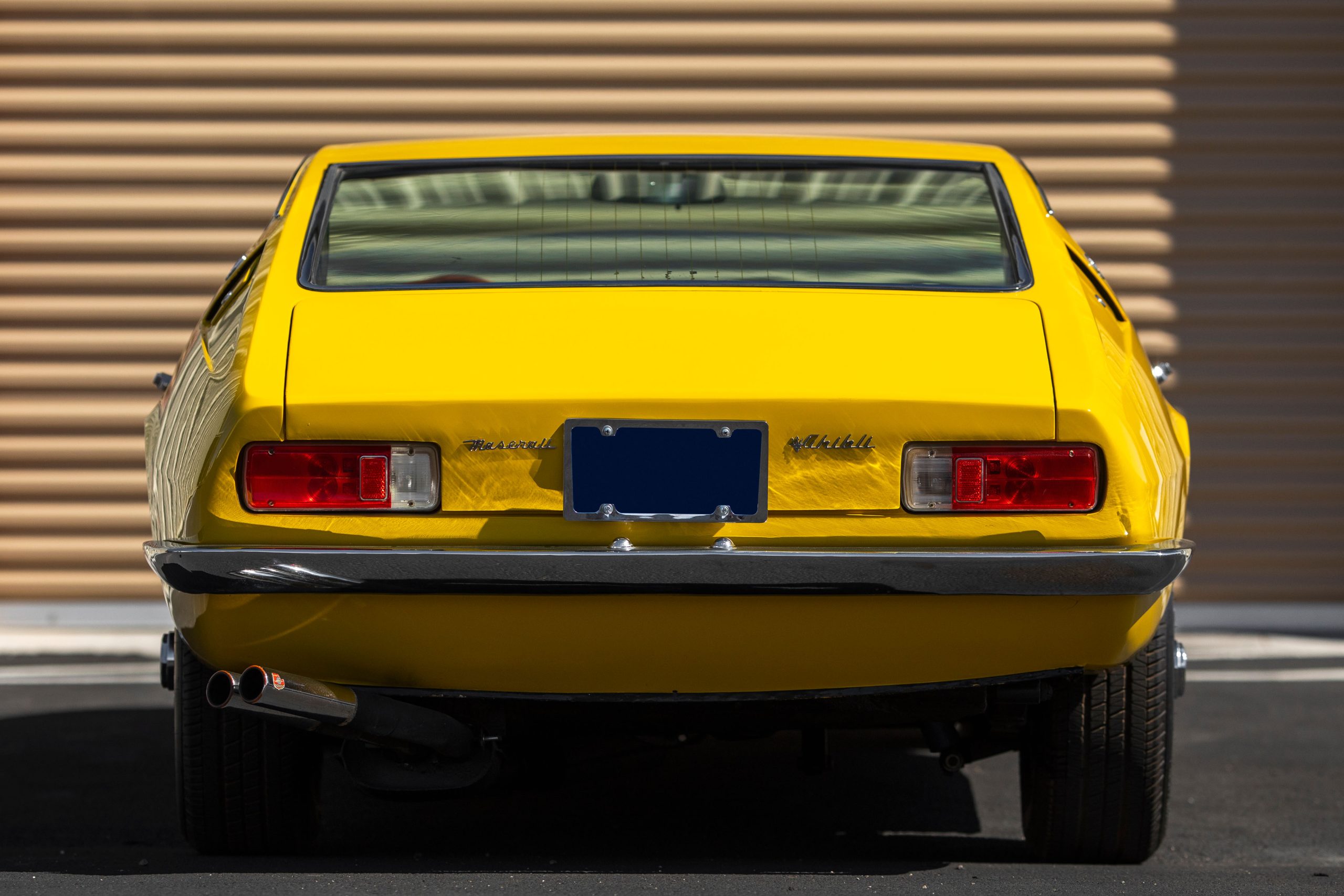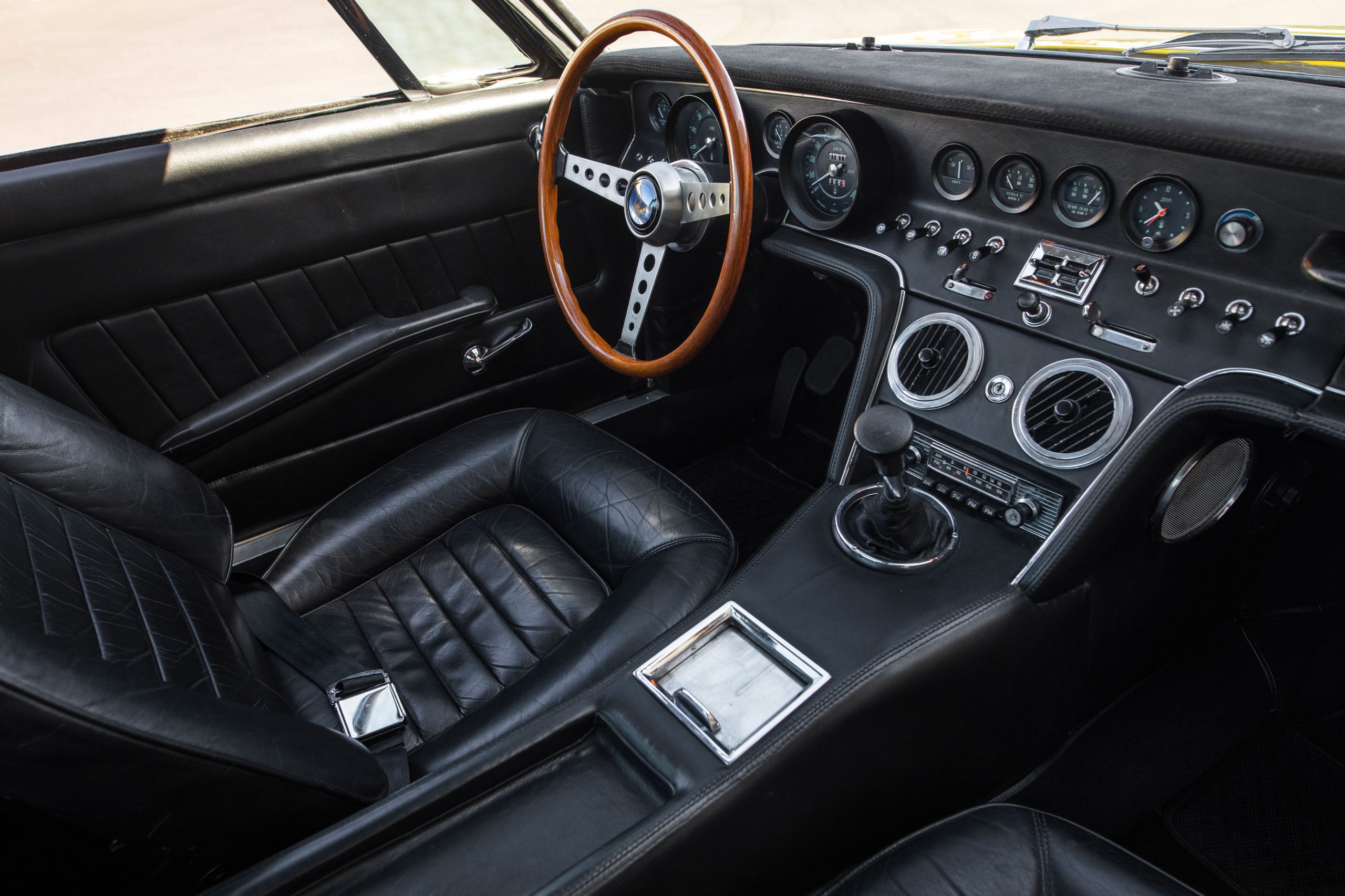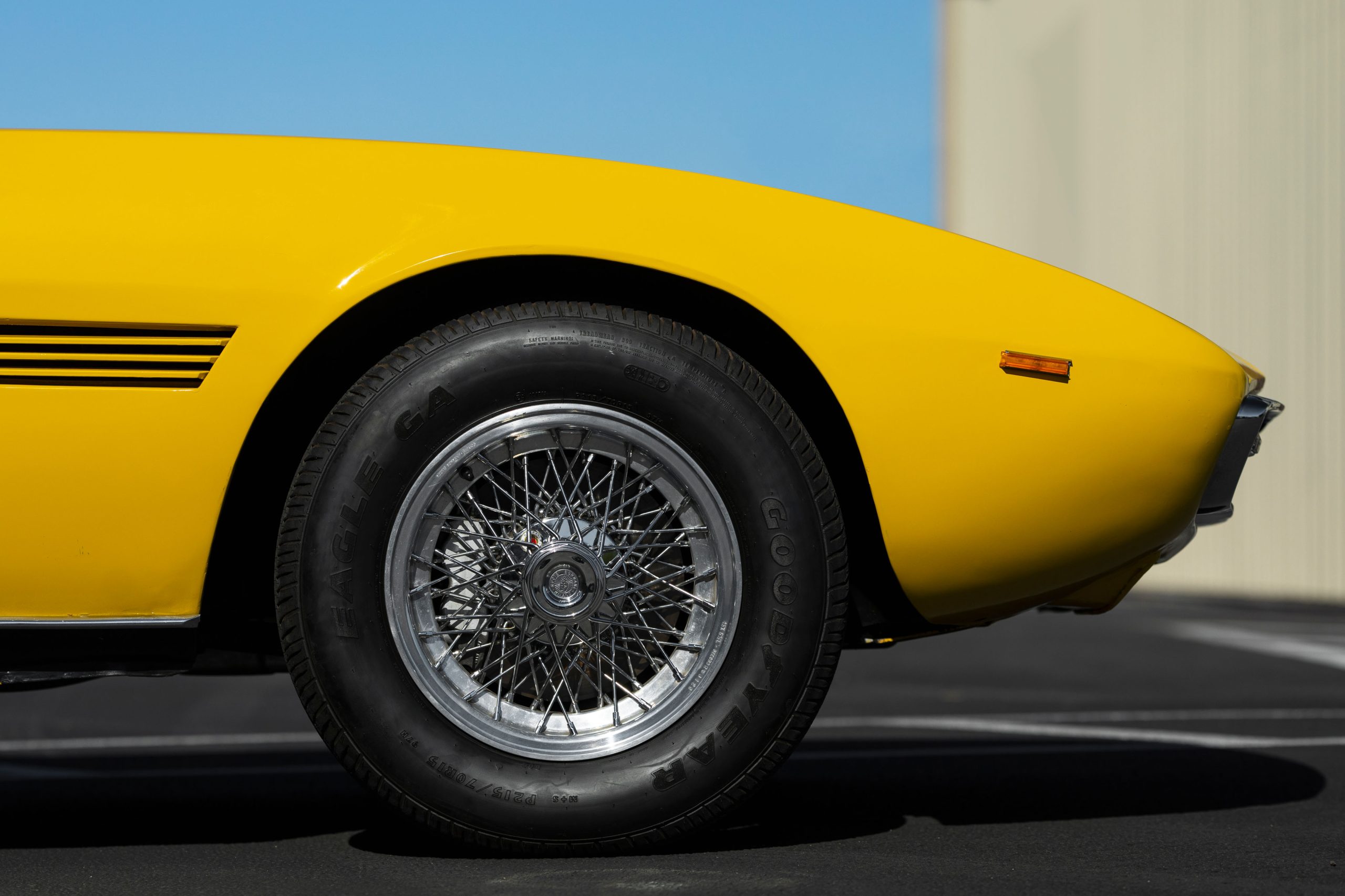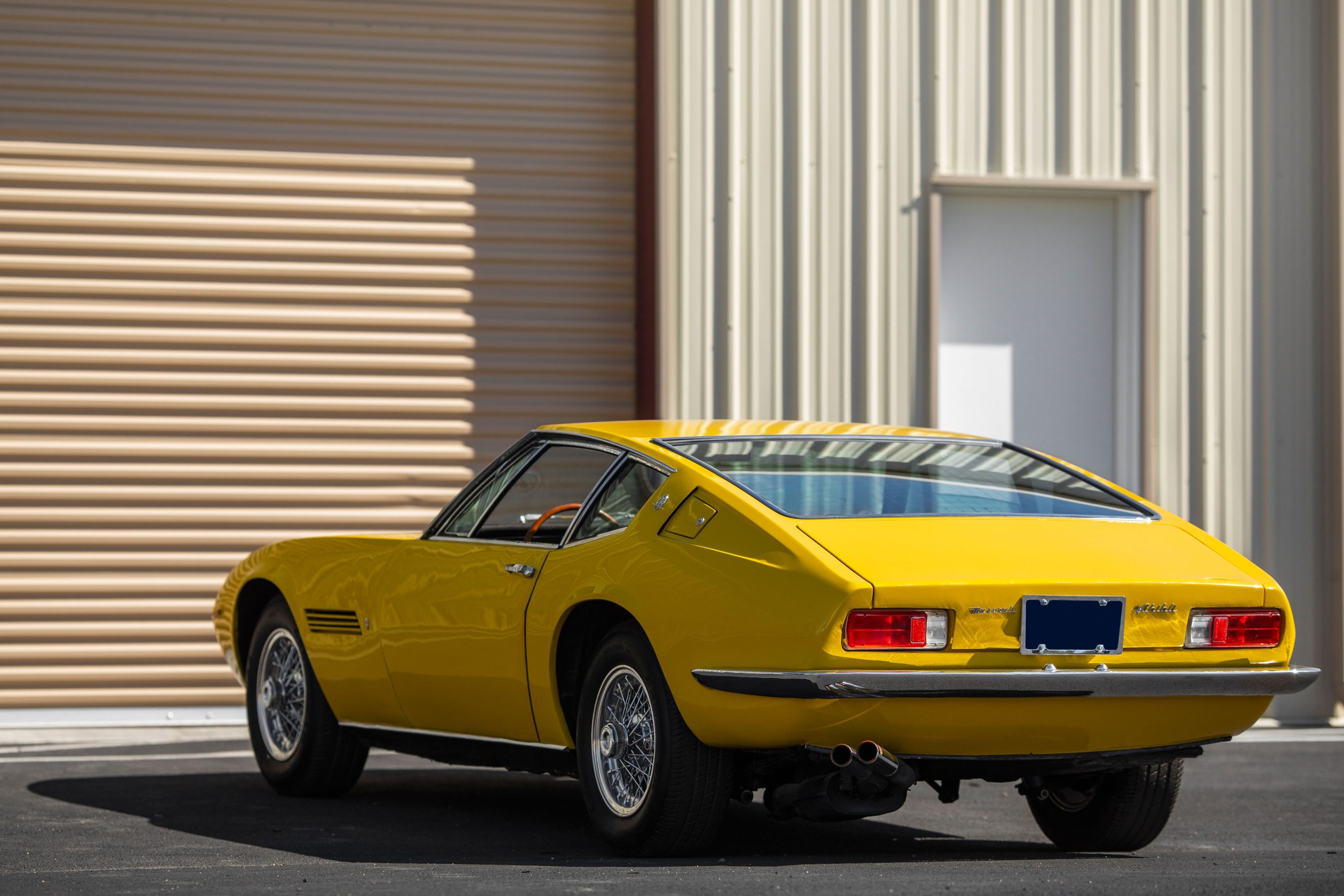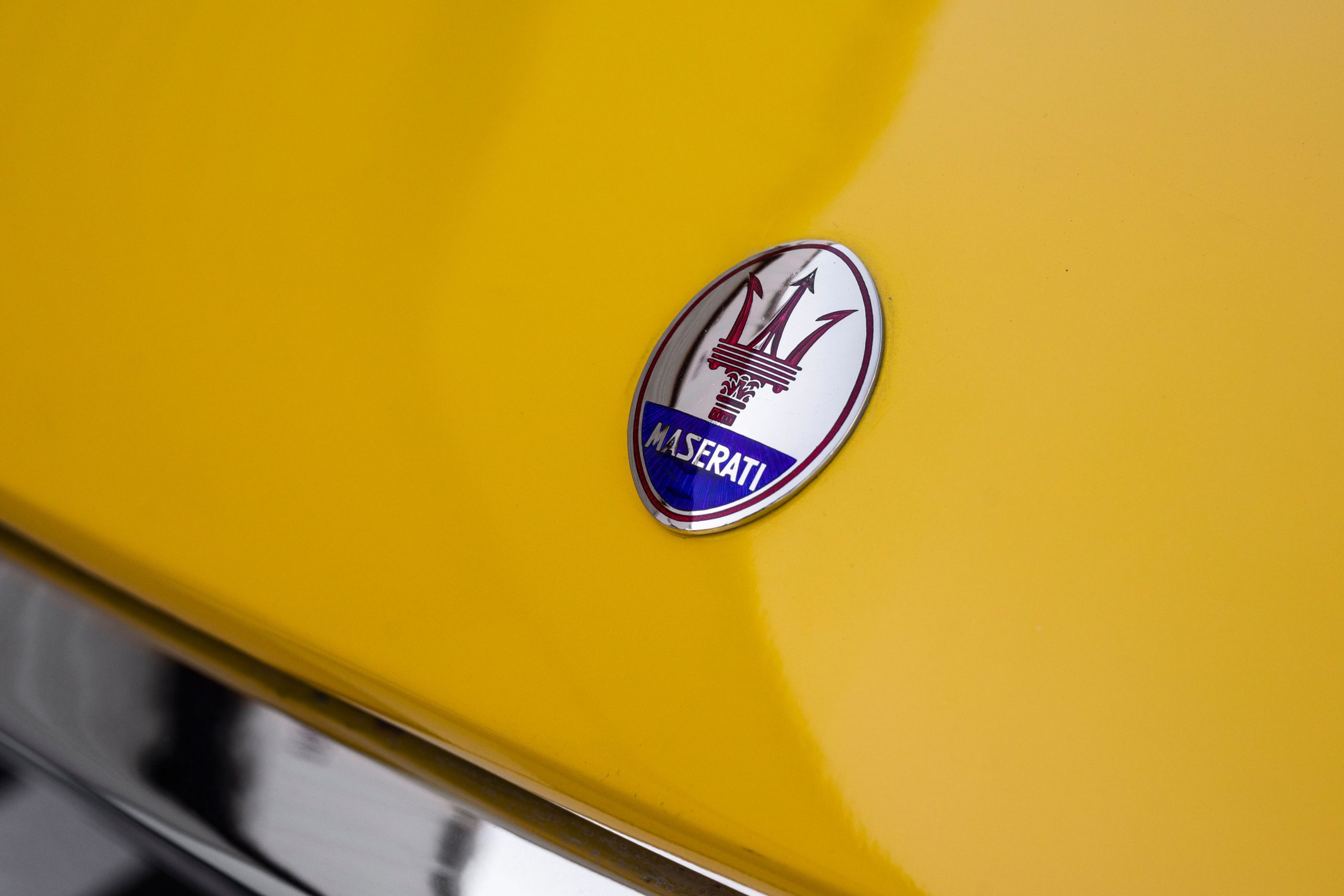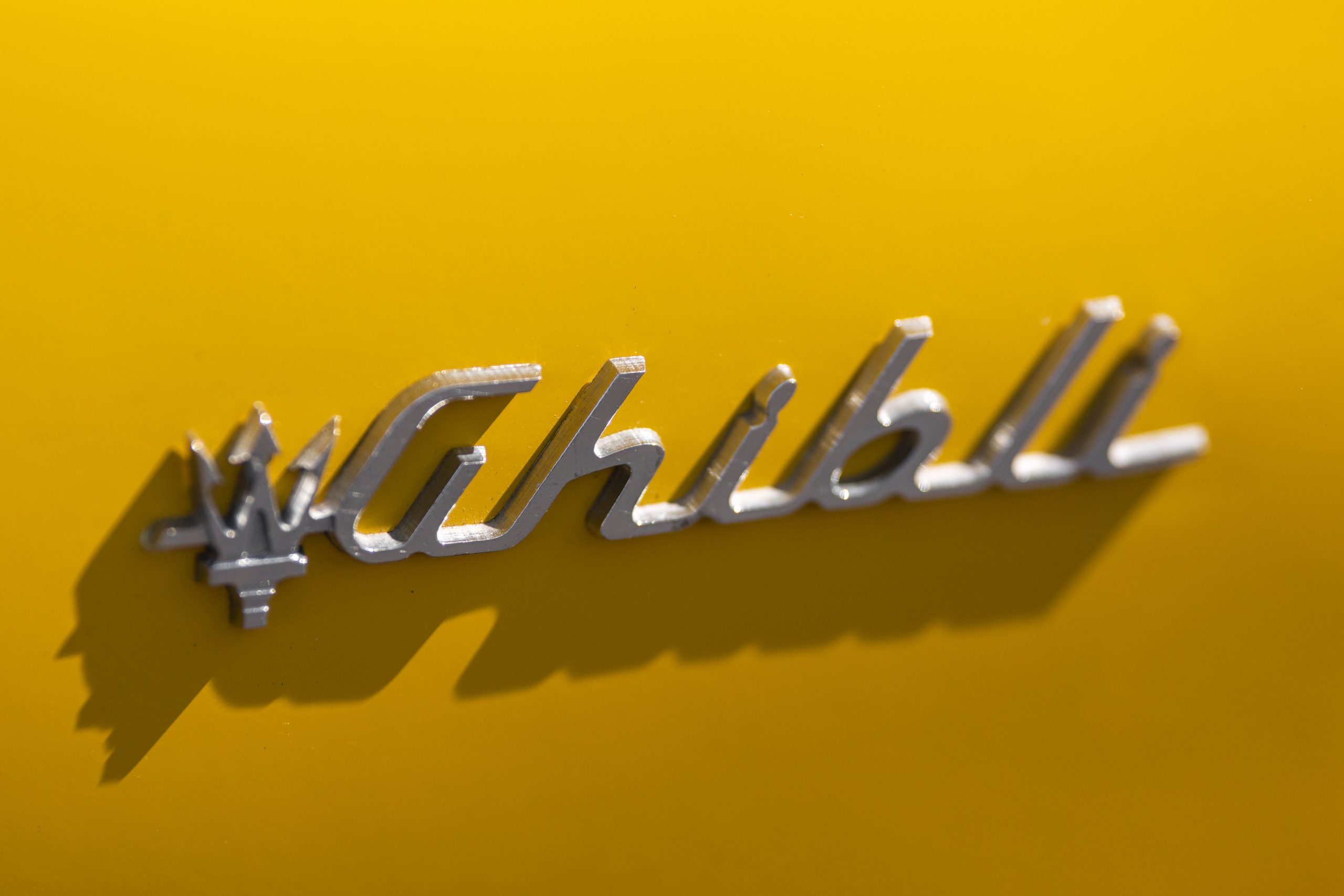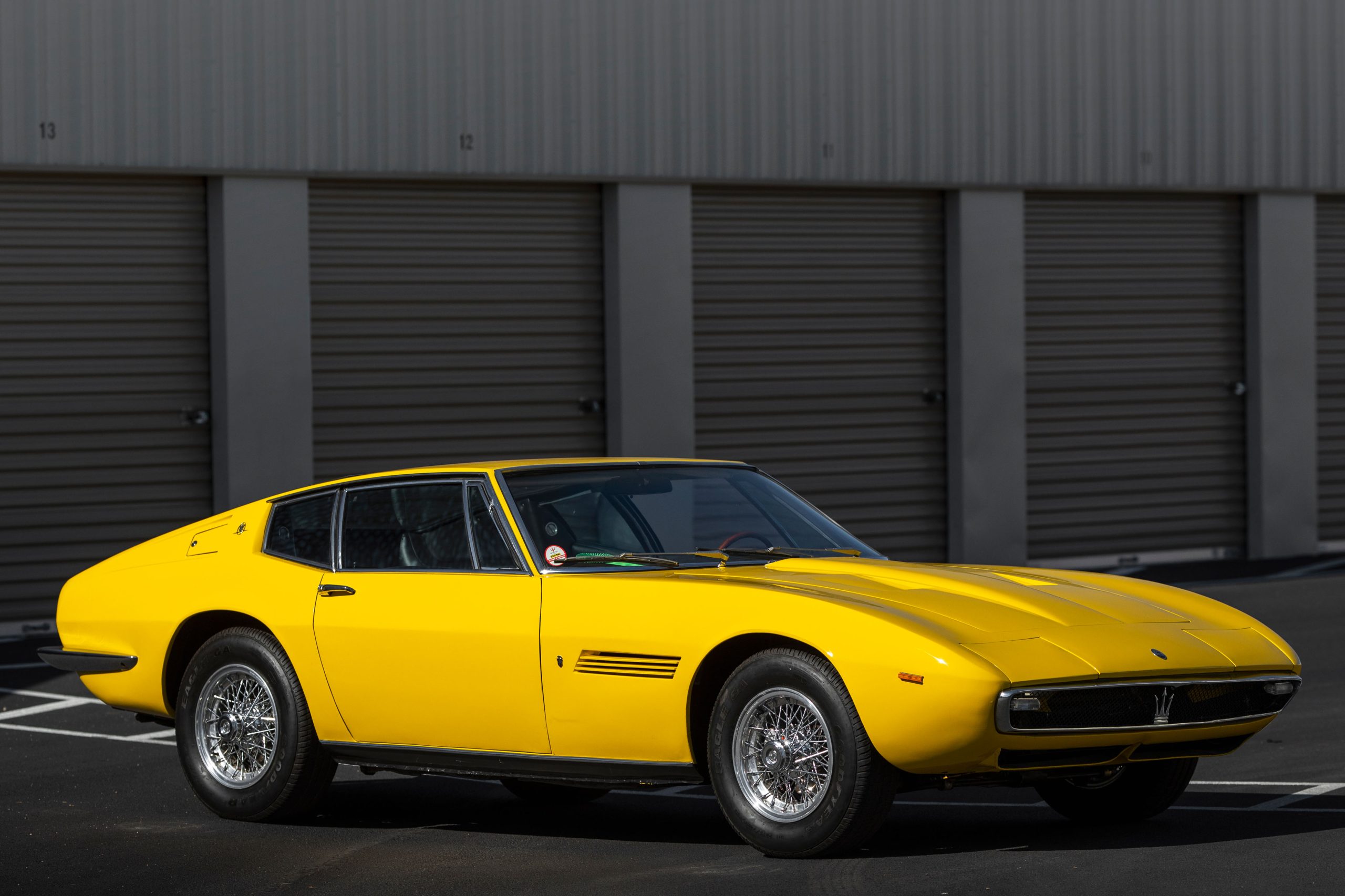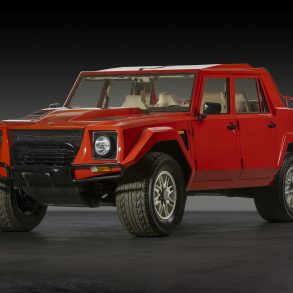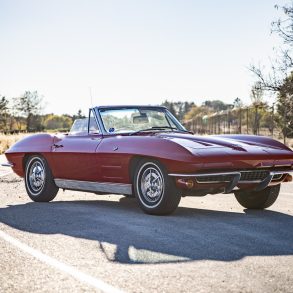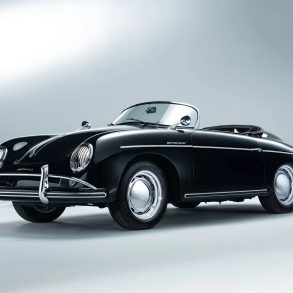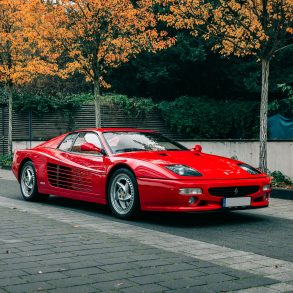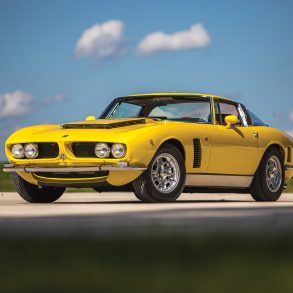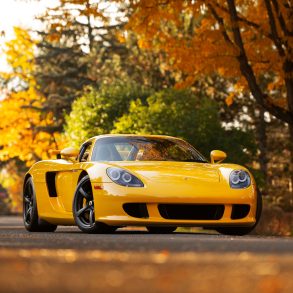Ghia debuted the Maserati Ghibli to a stunned public at the prestigious 1966 Turin Motor Show. The advanced styling incorporated surprisingly flat body panels, folded and chiseled details, hidden headlights, steep and sweeping glass, and none of the rotund undulations found in the aging Ferrari 275GTB and other premier sports car offerings.
The Ferrari Daytona would not arrive for another two years, and thus the Ghibli would prevail not only with its 170 mph top speed, four-wheel disc brakes, 330 hp DOHC V8 engine, and independent front suspension; it would also defy traditional proportions, sitting very low (roofline measuring just under 46 inches) and stretching out with a commanding 71-inch width. Immediately following the release of the production Ghibli, Giugiaro would depart Ghia to start Italdesign, his own firm—a design studio that retains his family presence to this day.
Aptly named for the exotic Saharan desert winds, the Ghibli evoked an instant sense of mystery and power, yet the mechanical features were just as provocative as the body design. The V8 engine delivered a competition voice, in part due to the race-bred dry sump oil system, but also featured several technical advances.
The four-cam, 90-degree V8 (derived from the 450S sports racer and used in the 5000GT), allowed for a very low hood line. With the hood line lowered and width increased, Ghia engineers were able to place the driver and passenger in a more aggressive seating position, employing a dramatically lowered roofline.
The frontal area of the new flat paneled architecture resulted in a narrow profile and a wind-cheating front fascia, sporting a wide but narrow grille and wafer-thin, perimeter-style bumper. At the rear of the car, Giugiaro accentuated the low profile with a fast roofline highlighted by expansive rear glass, terminating in an effective aerodynamic Kamm-back tail. Giugiaro leveraged these numerous technical advances to deliver a car like no other on the market.
Accommodating these new proportions, the Ghibli used a Quattroporte tubular steel chassis, shortened and fitted with live rear axle and leaf springs, favoring a more reliable suspension. The substantial engine torque, coupled with reliability, smooth shifting ZF 5-speed gearbox, and commanding presence made the Ghibli one of the finest GTs available at the time.
Photo Source: RM Sotheby’s


